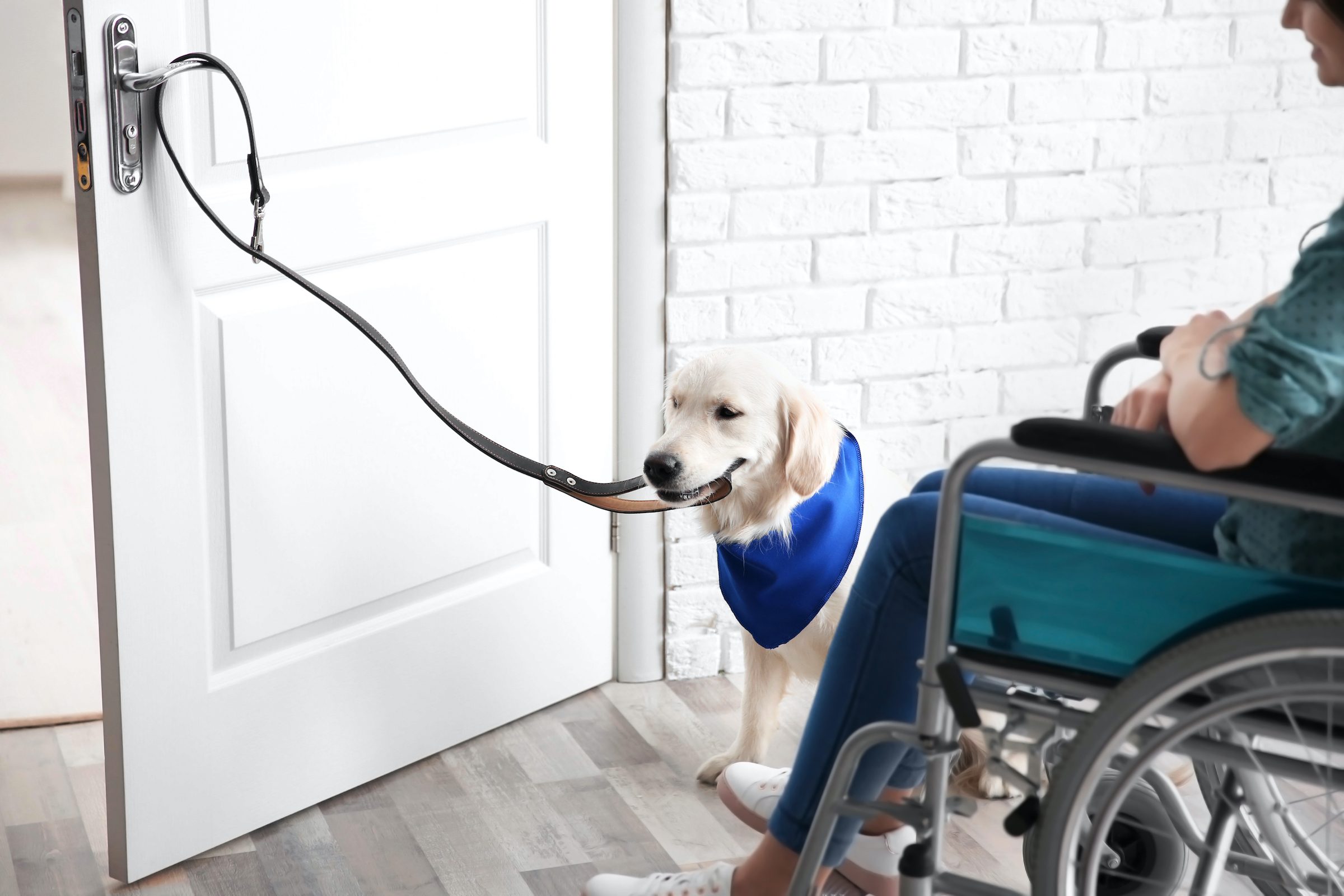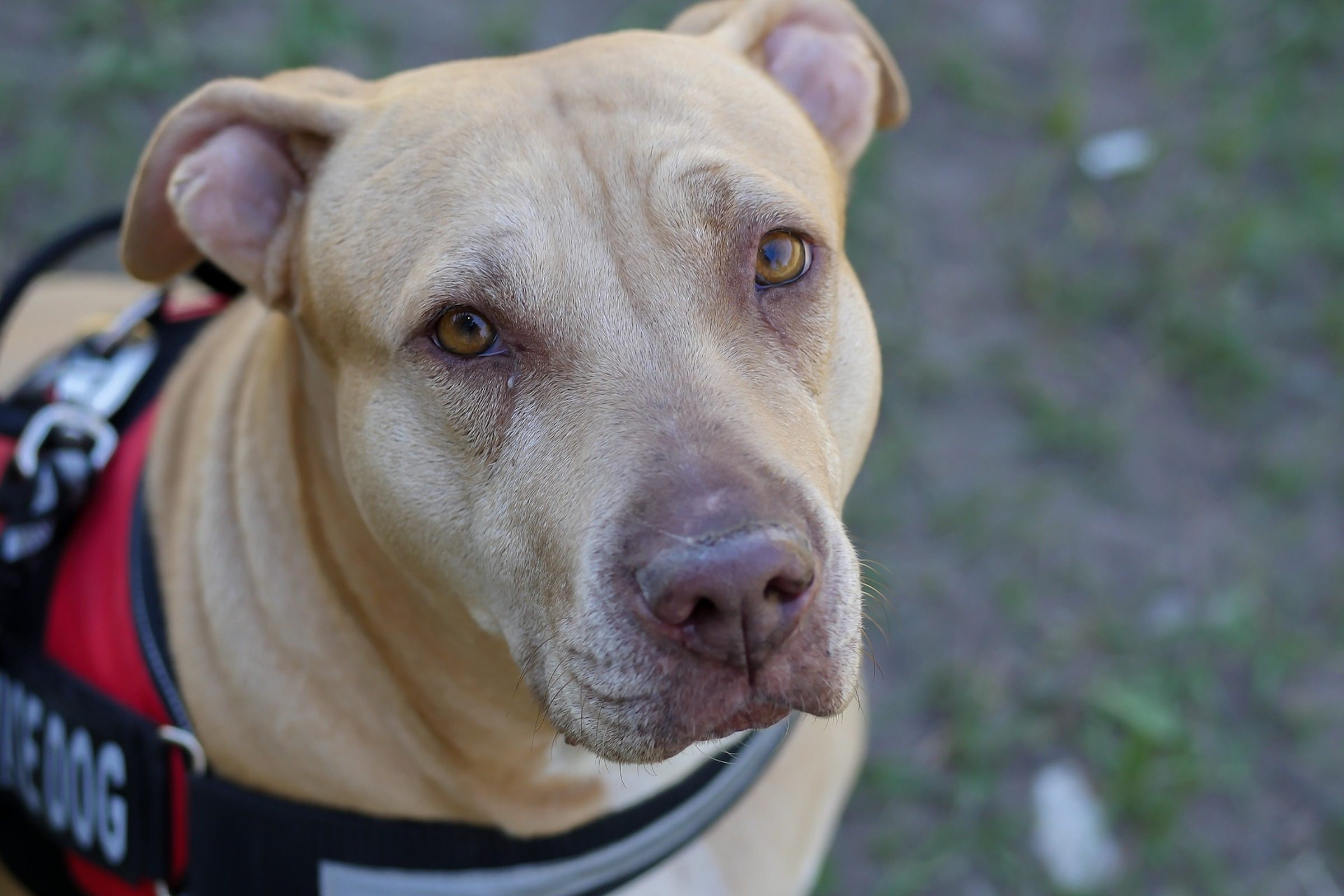The first week of August is special for one particular reason: It’s International Assistance Dog Week! It’s the best time to support and celebrate the amazing assistance dogs, guide dogs, and other support animals that help humans live their best lives — and don’t forget all the programs and organizations that help raise and train these four-legged angels. We appreciate you!
In honor of this ever-important week, we’re diving into everything you need to know about assistance dogs. We’ll explain the difference between types of service dogs and the ways they’re trained, as well as share what you can do to make a difference for the working pups in your community.
What is an assistance dog?
Assistance Dogs International (ADI) defines an assistance dog as a “guide, hearing, or service dog specifically trained to do more than one task to mitigate the effects of an individual’s disability.” So, generally speaking, “assistance dog” is an umbrella term that describes guide dogs, hearing aid dogs, and other medical service dogs.
These general service dogs can aid in many areas of life and are often trained in more than one — whatever suits their handler’s needs. Mobility dogs might help push wheelchairs, brace their humans as they stand, or assist with navigating obstacles. There are also seizure or diabetes-response dogs, which will alert, prevent, or aid in the event of a medical emergency. This is only a handful of examples of what an assistance dog can do — dogs really are amazing creatures!
The difference between assistance dogs and other support animals
Although “assistance dog” is a broad category, not all working animals fall under this definition, even if they technically assist in navigating life. One well-known example is the emotional support animal (ESA). While affectionate and often well trained, ESAs don’t always require specialized training and aren’t considered service animals.
Facility dogs are another great example. These intuitive and gentle pets are often seen comforting patients in the hospital or giving folks in nursing homes a laugh, but they also are not trained to provide medical or mobility assistance. Facility dogs are trained alongside a professional handler, who is often their owner as well.

How are service dogs trained?
A dog’s specific training is determined by their specialization, but this can’t begin until they pass basic training. Once their skills are scored, the folks in their program can help match the dog to one of their applicants. At that point, any specific tasks or skills can be taught so that by the time they go home with their handler, they’re a pro!
Each program handles service dog training a little differently, so it never hurts to ask for details if you’re looking into a specific organization. There’s often still a lot of training to do — sometimes even in a group setting — once your furry helper comes home, so it’s important to find an organization whose values and strategies you believe in.
How to find an assistance dog
Depending on where you live, you may have an assistance dog organization closer to you than you think. A quick internet search will help you find out, and ADI is a great place to start. Their website has a database of over 100 ADI Accredited Members who meet the top standards for safety, education, and community outreach, so you won’t have to worry about the quality of training your dog gets.
There are many other reputable programs out there, so it never hurts to ask around. Your veterinarian’s office may have some resources on hand, plus you can visit social media or a website to help you find what you’re looking for.

How to support assistance dog programs
Whether or not you’ve personally experienced life with an assistance dog, it’s easy to see why they’re so valuable. Supporting the programs that raise and train service animals will go a long way in keeping their practices alive, whether you decide to give financially or through volunteering. Many service animal organizations, including Assistance Dogs International, are nonprofits that rely on donations and generosity. Luckily for you, these donations are also tax-deductible!
It’s the perfect time to raise awareness and give thanks to the dogs who spend their lives helping others and to the people behind the scenes who make it happen. Each dog takes several years of raising and training before they’re ready to work independently, and that sure doesn’t happen without hard work. From all of us at PawTracks: Thank you!



